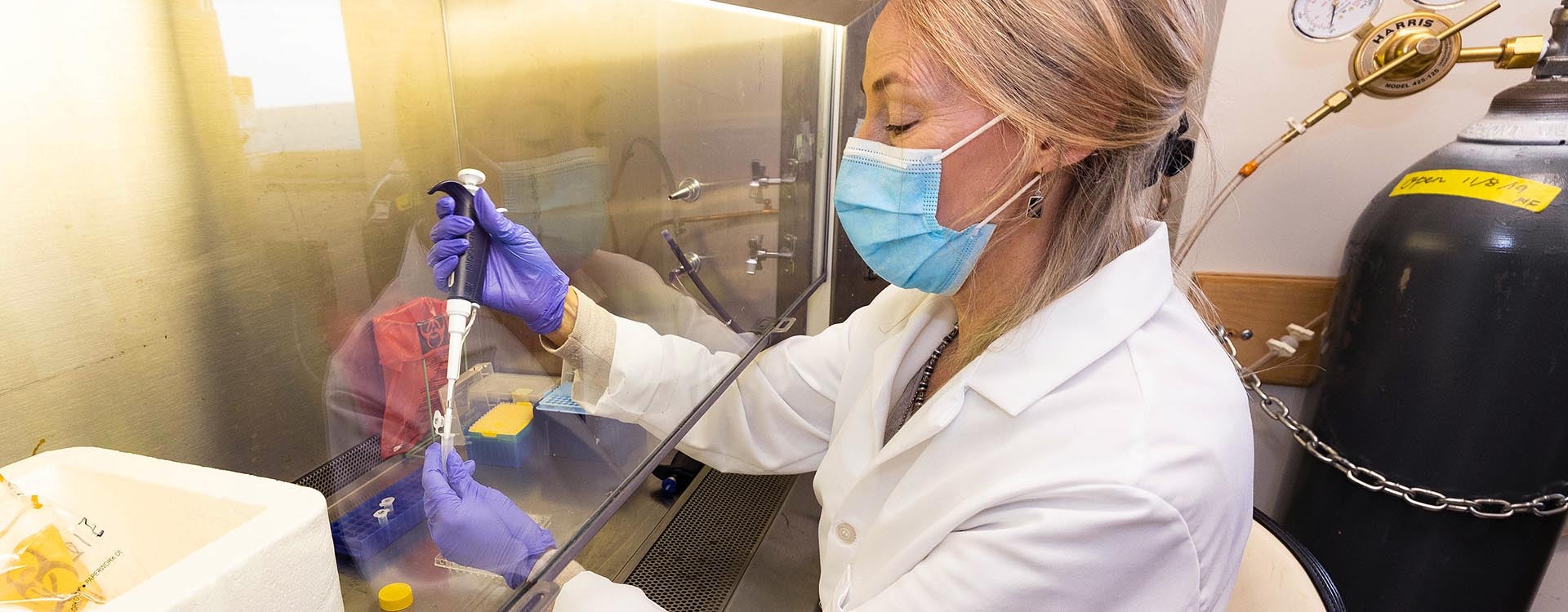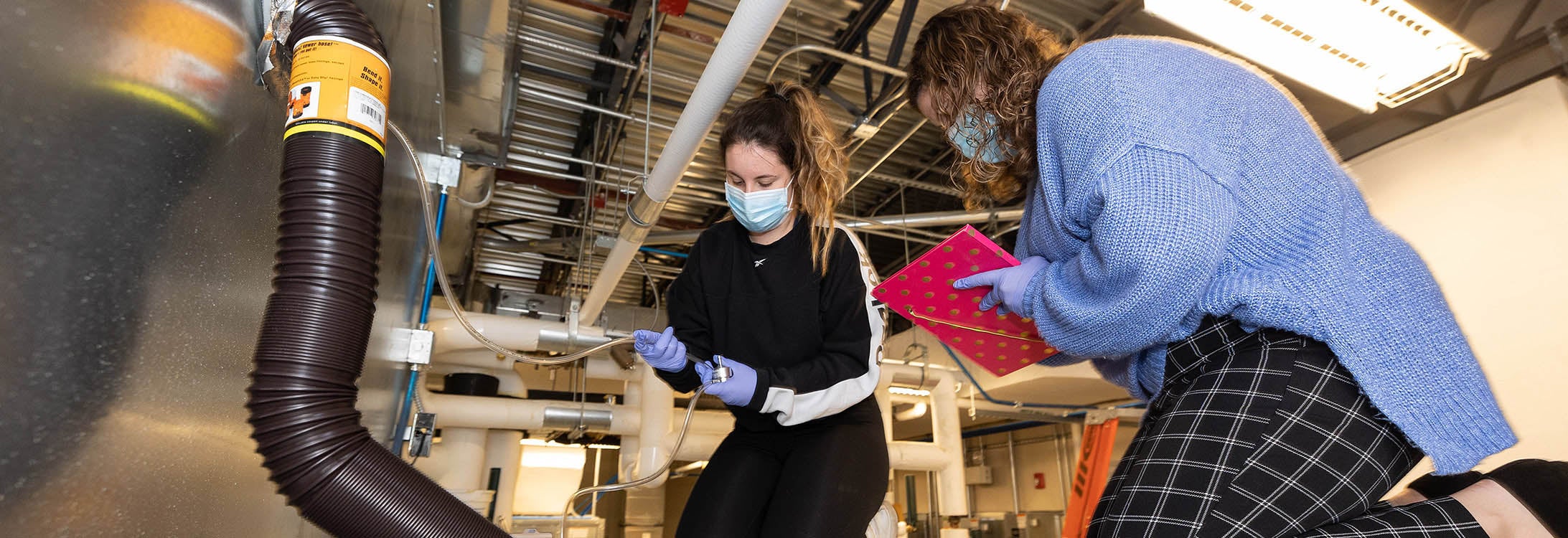AIRBORNE DETECTION
ECU researchers discover new way to detect coronavirus through building ventilation systems
Researchers at East Carolina University’s Brody School of Medicine have found a new way to detect the virus that causes COVID-19 by testing the air passing through building ventilation systems. The discovery could lead to earlier detection of the virus, improved quarantine protocols, reduced transmission and fewer outbreaks.
Dr. Sinan Sousan, an assistant professor in Brody’s Department of Public Health and research faculty at North Carolina Agromedicine Institute, and expert of environmental and occupational airborne exposure, and Dr. Rachel Roper, a professor in the Department of Microbiology and Immunology with an extensive background studying coronaviruses, spearheaded the effort to learn whether SARS-CoV-2 could be detected through the heating, ventilation and air conditioning (HVAC) systems in student dorms.
Their research was recently published in The American Journal of Infection Control, and represents a breakthrough in the way the virus can be detected before an individual tests positive.
“I think it’s important because you want to know if someone in the building is infected, potentially contagious and infecting other people, so it’s a really important public health measure,” Roper said of the study, adding that this method could also be used to test for other airborne viruses and pathogens such as influenza.
Researchers collected samples from two large student dorms and an isolation suite housing students that had tested positive for COVID-19 several times per week for more than three months beginning in January 2021.
View this video on YouTube for closed captioning.
Sousan’s team collected a total of 248 air samples, testing four collection methods that deposited samples into small filters, saline solutions and cartridges that were then preserved and transported to Roper’s lab for RT-PCR analysis. The testing revealed the presence of SARS-COV-2 in the isolation suite air samples 100% of the time. In the dorms where students were not already in COVID-19 isolation, researchers were able to detect the virus in the air samples 75% of the time when students on the same floor later tested positive via nasal swab.
The trick to success was capturing air samples with virus that was concentrated enough to be detected, and maintaining the virus’s stability within the samples to get it back to lab with intact RNA for the PCR analysis, Roper said.
Similarly to testing a building’s wastewater, implementing building air sampling on a broader scale could allow for earlier detection of the virus, particularly in shared spaces.
“Detection in air provides advance notice of potential exposures in specific locations within a building,” said Mike Van Scott, interim vice chancellor for ECU’s Division of Research, Economic Development and Engagement. “It was fortuitous that SARS-CoV-2 could be detected in wastewater, but the next respiratory virus that we encounter may not be as stable, and detection in air would allow us to respond quickly.”
The research was funded by university COVID-19 relief funds, and completed with assistance research specialist Ming Fan and former undergraduate students Kathryn Outlaw and Sydney Williams. ECU Facilities Services staff also assisted, drilling holes into the HVAC units and ductwork of three student dormitories and provided building access, allowing the researchers to collect samples.

Dr. Rachel Roper, a professor in the Brody School of Medicine’s Department of Microbiology and Immunology, tests air samples collected from a campus dormitory for the coronavirus that causes COVID-19.
